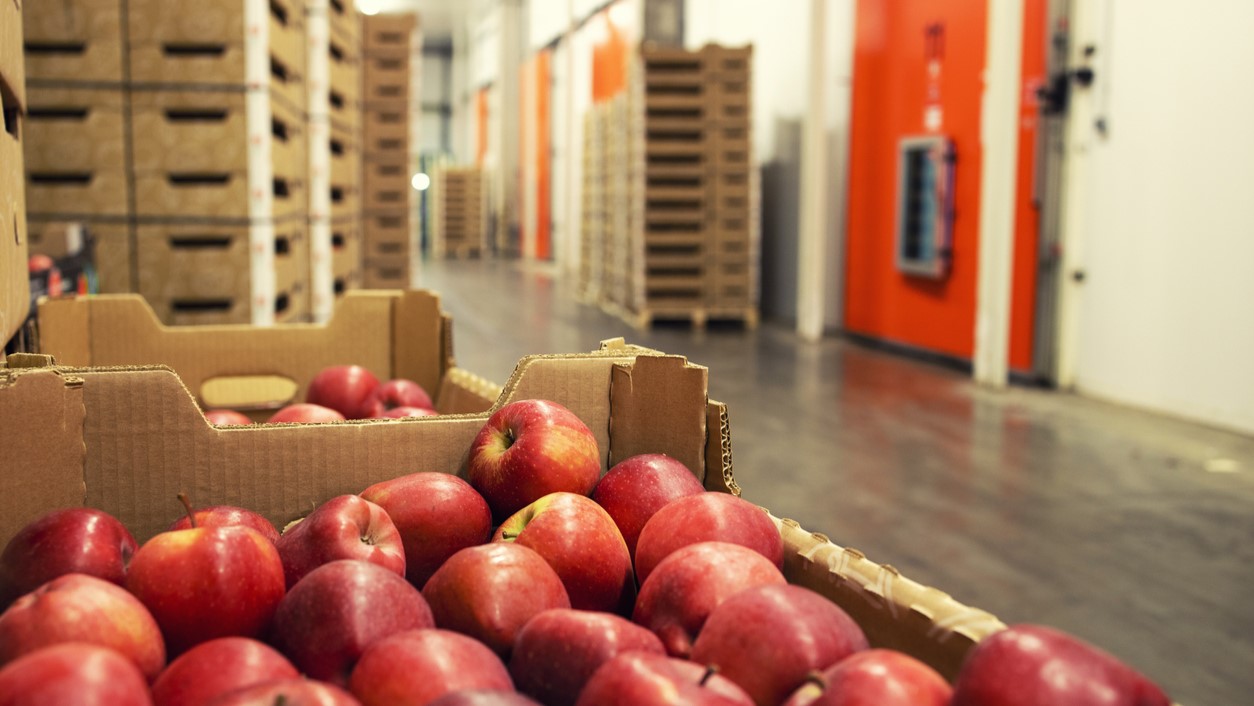4 Common Food Safety Challenges for Distributors and How to Solve Them
The dangers of contamination don’t end once food products leave farms or processing plants. Ensuring food safety requires high standards and dedicated adherence to protocols throughout the entire supply chain — including distribution.
Food distributors have a unique role in the supply chain as intermediaries between producers and retailers and other food service providers. In fact, the freshness and quality of food products for consumers depends on how quickly and efficiently distributors can get items to shelves. While distributors don’t handle raw ingredients like manufacturers do, there are still a number of food safety risks inherent in their operations.
Here’s a breakdown of the top four food safety challenges facing distributors and the benefits of food warehouse safety training programs:
1. Maintaining the Cold Chain
The Challenge: Food distributors need to store a wide range of perishable food and beverage products at cold temperatures, including fresh produce, dairy products, meat and poultry, ready-to-eat meals and frozen foods, as well as a growing variety of beverages like juices and smoothies. What’s more, distributors must maintain the cold chain throughout the entire distribution process in order to prevent spoilage, or the growth of pathogens. Failures in cold chain management contribute to the global 14% of food waste that occurs between harvesting and retail distribution.
The Solution: To maintain the cold chain, distributors need to regularly monitor, calibrate, and maintain cold rooms, freezers, refrigerators, and other storage units at their facilities. Each product category has its own temperature requirements to maintain food safety and must be stored accordingly. Refrigerated vehicles and insulated containers during transit must maintain the desired temperature en route to retailers. Workers must monitor temperatures throughout the journey to keep products in a safe range. Distribution managers should also optimize routes and delivery strategy to avoid unnecessary delays that could put the cold chain at risk.
2. Rodent and Pest Control
The Challenge: Food distribution centers are particularly attractive to rodents and pests because of the large quantities of food stored at their facilities. The constant movement of materials in and out of these centers creates opportunities for pests to enter unnoticed, and large storage areas and packaging materials provide ample space to hide, nest, and multiply. Rodent infestations in major food distribution centers in 2022 created some of the biggest food safety incidents of the year.
The Solution: Workers at food distribution centers must be especially diligent about facility hygiene, regularly cleaning the facilities, removing food debris, and practicing proper waste management. Facility managers should seal all potential entry points, including doorways, windows, gaps in walls, and other architectural defects. Regularly inspect facilities to make sure seals are performing up to standards and no new entry points have appeared. Work with pest control specialists to bait and trap rodents and other pests, and regularly monitor to make sure there are no new signs of infestation.
3. Cross-Contamination
The Challenge: Food distributors often store and transport many different types of products from a variety of manufacturers, increasing the potential for cross-contamination at their facilities. Poor segregation due to space limitations, improper handling, and poor adherence to cleaning and sanitation protocols dramatically increase the risk of cross-contamination.
The Solution: To avoid these problems, facility managers should establish clear segregation and storage practices. Raw products, like meat, should be segregated. Iced produce should have containment systems to prevent meltwater from contaminating materials stored below. Allergens, such as eggs that could break during handling, should be assessed for risk to determine needs for segregation. Repack areas should also be managed to prevent cross-contamination and cross-contact risks. Wet storage coolers must be routinely cleaned to maintain sanitary conditions. Provide team members with warehouse food safety training on all measures used to prevent cross-contamination and cross-contact risks.
4. Seafood and Shellfish Risk Management
The Challenge: Seafood and shellfish are as at risk for contamination during distribution as they are during manufacturing and processing. All items in this category potentially harbor harmful bacteria, viruses, and parasites, and require special care to prevent their growth. Distributors should be especially concerned about refrigeration during both storage and transport.
The Solution: Developing and following a seafood HACCP (Hazard Analysis and Critical Control Points) plan specifically for seafood is critical to preventing the growth of pathogens, toxin formation, and other seafood safety issues. Examples of critical control points in distribution include temperature control during storage and transportation as well as appropriate labeling and documentation for shellstock harvest areas.
In today’s challenging business landscape, it can be difficult for distributors to develop and maintain an effective food safety program. That’s why it’s so important to leverage the expertise and insight of partner organizations. For over a century, AIB International has helped companies throughout the entire food supply chain develop and execute robust food safety programs, including food warehouse safety training. Learn more about our Food Protection for Warehouses and Distribution Centers Webinar Series here.


